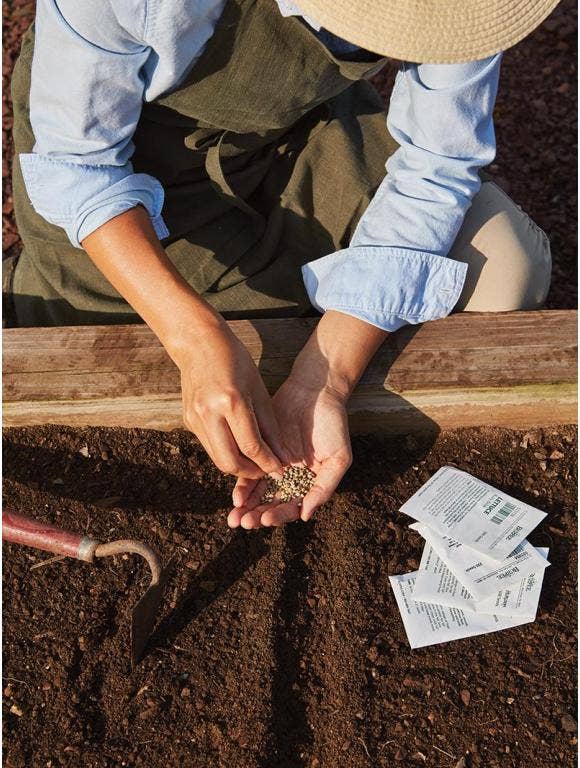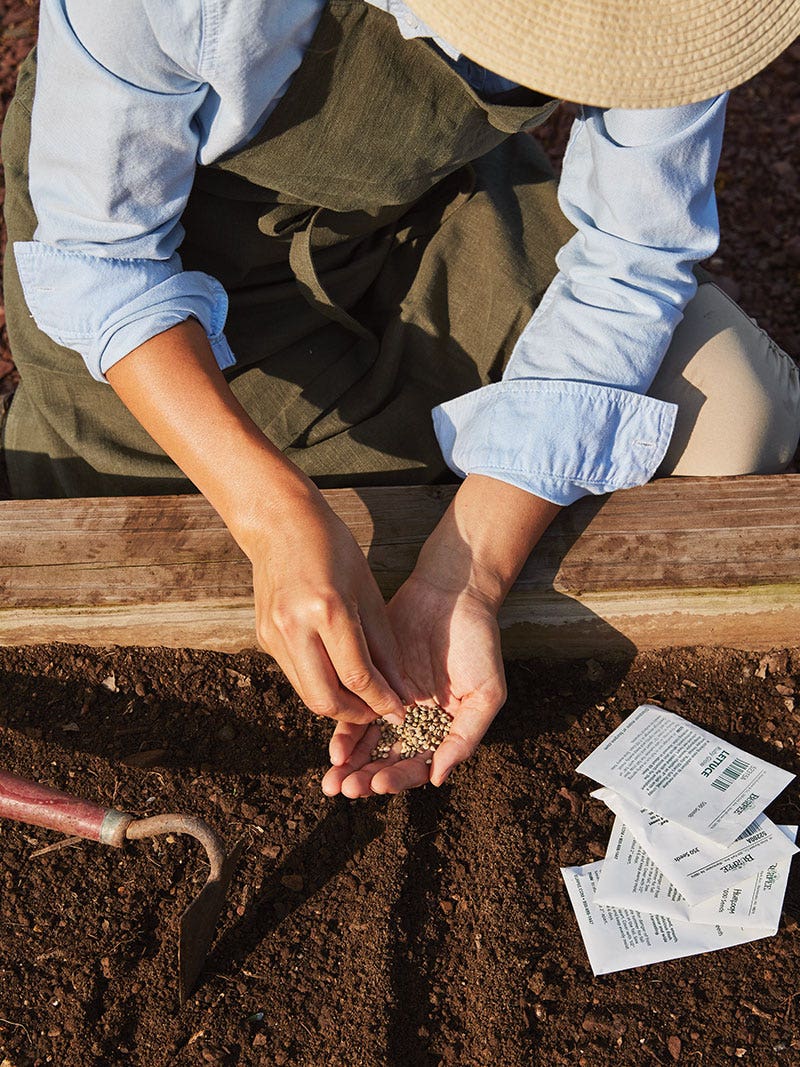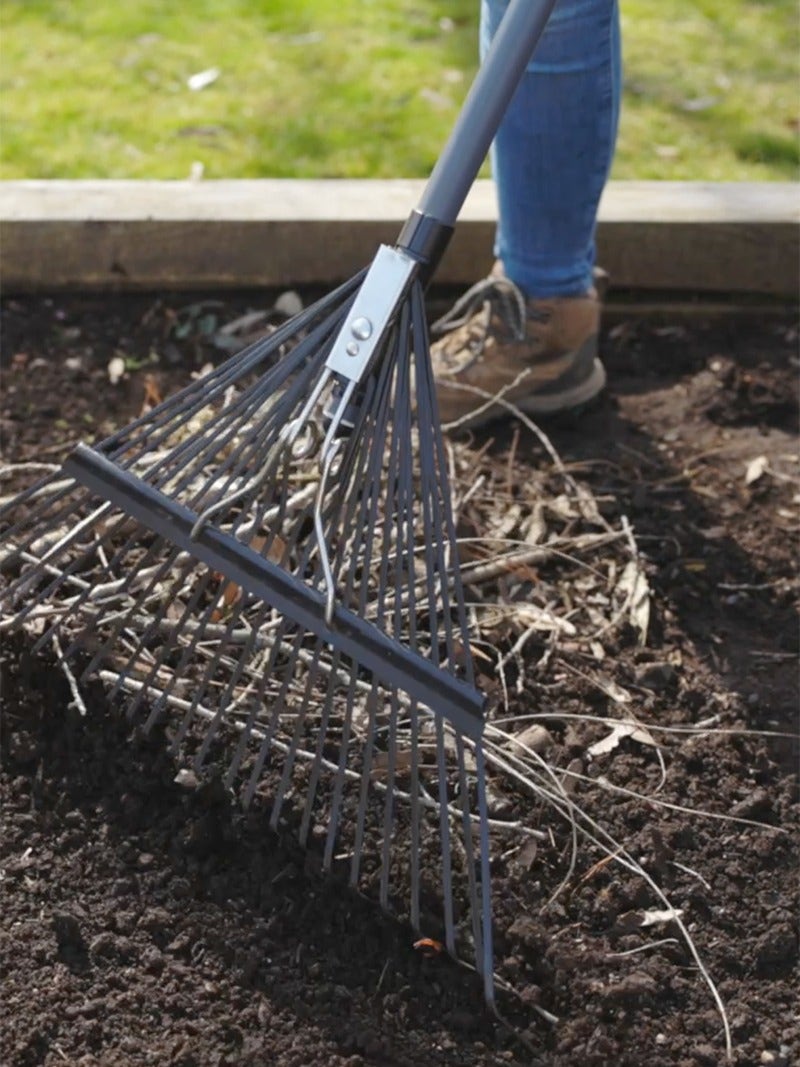
Start Direct Sowing
Many popular vegetable seeds can be sown directly in your outdoor garden – including salad greens, carrots, cucumbers, radishes and beets! Before you begin, watch this quick-start video on how to direct sow seeds:
Not all seeds require starting indoors. Many flowers and vegetables thrive when sown directly in the garden, and some prefer it and won't always thrive with transplanting. By planting direct sow seeds into prepared garden beds, instead of buying whatever plants are available at a garden center in spring, you can save money and choose from a much greater variety of plants to grow.


When to Direct Sow Seeds
Timing is key when it comes to successfully sowing seeds in the ground. When to plant is based on various factors, including your garden growing zone and the date of your last frost, or when, on average, the last frost occurs in your area.
When to direct sow also depends on the seeds themselves. Seed packets tell you what you need to know about each specific variety — at what temperature it's safe to sow the seeds outdoors, how long seeds will take to germinate and how many days they'll need to reach maturity for harvest (for vegetables and herbs) or bloom (for flowers). Be sure to choose vegetable varieties that suit the length of your growing season. Otherwise, you might not be able to harvest your crop before the first frost at the end of the season. If you live in a colder region, this may mean you're unable to direct sow plants that require a long, warm growing season, such as tomatoes and eggplants.
How to Direct Sow Seeds
Direct sowing requires four basic components: sun, soil, water and, of course, the seeds. Most vegetables and flowers need full sun, which means six to eight hours of unfiltered sunlight daily. It's vital that you choose a spot in your garden for direct sowing that provides enough sunlight for your seeds to germinate and grow.
The soil will support your plants as they grow, protecting the roots and providing nutrients. When planting directly in the garden bed, it's essential to use rich, well-draining soil mixed with organic matter, like compost.
Water is critical to helping your seeds germinate and thrive. Young seeds and seedlings are susceptible to drying out and require regular watering to maintain constant moisture. Take care to water gently as a strong water stream can easily disturb seeds.
Finally, follow the directions on sowing seeds from the packet. Each type of seed will require different planting depths and spacing, so check the instructions and plant accordingly. However, as a general rule of thumb, you can plant each seed at a depth three times the dimension of the seed itself. It can be helpful to direct sow vegetables in straight rows.
Dig a shallow trench, place the seeds as specified and gently cover them with the pushed back soil, being careful not to disturb them. Water the row immediately after planting to settle the soil and begin the germination process, taking care not to overwater and flood the bed. It's also a good idea to label your garden bed, so you remember where you planted each type of seed.
How to Prepare the Garden Bed
When preparing a garden bed for direct sowing, be sure to pull all weeds and remove any large rocks, sticks and large clumps of dirt. The soil should be fine and enriched with compost. Use a rake to loosen the soil and level it off to an even surface before you begin planting.
How Many Seeds to Sow
How heavily should you sow seeds outdoors? Keep in mind that not all seeds germinate, birds or other critters may dig them up, or they can wash away with rain. Most seed packets will give you guidelines for each variety. It can be helpful to plant slightly more than the recommended amount to allow for seeds that won't germinate and other losses. Then, you can thin the plants back to the recommended spacing.
How to Thin Seedlings
After seeds germinate and the plants develop their first true leaves, thin the seedlings as the packet directs. Don't be tempted to leave all the seedlings in the bed, thinking you'll get more for your money. Individual plants won't grow strong stems, leaves and roots to produce flowers and vegetables without sufficient space.
You have many options when it comes to direct sowing. Some of the best vegetable seeds to direct sow include corn; leafy greens, like lettuce; peas; beans; root vegetables, like carrots and radishes; squash; and cucumbers.
Most annual flower seeds do well with direct sowing. Popular choices include sunflowers, zinnias, poppies and marigolds.
There's nothing quite like the simplicity of direct sowing seeds. You plant a seed in the soil, add a little water and sunshine, and soon you're eating or enjoying the beauty of what you grew.
Discover more exciting varieties to plant in your garden with Burpee's recommended direct sow vegetable seeds.




















